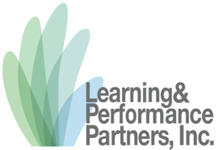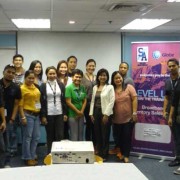Ask any progressive company about their vision or business strategy, and chances are you’ll hear the words “competitive” and “competent”.
For instance, Megawide Construction Corporation Vice President for Human Resources Claudia Soriano says it’s important for them to have a competent workforce: “It’s one of the initiatives identified by the company in order for us to be more competitive in the market.”
A publicly listed company, Megawide’s projects include residential, office and school buildings, and socialized housing developments. In line with their strategic planning, top management decided on having training programs for their engineers and other technical staff. But not just any training—Soriano says they wanted it to be “as purposive as possible.” Off-the-shelf training programs just wouldn’t do.
“We wanted something that was tailor-fit to our needs,” Soriano says. “And being a construction company, kakaiba talaga ang mga needs namin (our needs are really different) from those of companies in other industries.”
Megawide called in learning strategist Armi Stephanie Treñas to help them design their training programs. The president and principal consultant of Learning and Performance Partners, Inc. (LPPI), Treñas works with companies to help make their training more effective.
It appears that in choosing customized training, Megawide is on the right track. Treñas says, “If you look at U.S. statistics, you’ll see that leading companies—the ones with more mature learning and development departments—spent 34 percent more for training.” But what’s even more telling is the fact that these companies chose to spend for customized programs compared to other companies, she adds.
Learning Architect
Treñas’ career as a learning and development practitioner spans close to 20 years. She has been in the academe and in business, working in different industries—food, construction, banking, and agriculture, to name a few. With the aim of improving business performance through customized learning solutions, she set up LPPI in 2003. The company has since served clients in the Philippines, Malaysia, China and Africa, including the United Nations and the Southeast Asian Association of Central Bankers.
“Training, for it to work, should focus on the knowledge and skills required in performance,” Treñas states. To help her clients get the most out of their learning programs, she uses a framework called Instructional Systems Design (ISD).
Ordinarily, training service providers and training programs focus on delivery rather than on the content or the design, she says. ISD is a holistic process—from analyzing a company’s requirements, all the way to evaluating whether the training met the objectives.
It’s like building a house, Treñas explains. An architect has to consider the needs, specifications, and resources of the client before designing and building a house. In the same way, instructional designers like Treñas are like learning architects who analyze and understand the learner’s requirements in the context of the business organization’s objectives.
The instructional designer then comes up with a “learning blueprint”, and identifies and develops the materials needed. The trainer comes in to execute the learning blueprint. While the instructional designer focuses on the planning side of the training, the trainer focuses on the execution. Lastly, an evaluation must be done to see if it met the training objectives and the requirements of the business organization.
Benefits Of Learning
The benefits of learning are many. “Learning can bridge competency gaps,” Treñas points out. “Companies are using training to equip graduates with the skills to make them more employable.”
One such company is EastWest Bank. The bank is on a growth path, says EastWest Academy Head Judy Capili. In 2012, they opened about 100 branches and are targeting to open 100 more in 2013.
“On any given day, we have about three training programs running. We hire about 60 to 80 people every 15 days. It’s really huge,” Capili says. “That puts a lot of pressure on us to train everyone,” she adds.
Capili explains that ISD has been useful in designing programs for new hires. With training programs skewed toward the “soft skills”, such as leadership and behavior, the tendency is that the technical aspect gets left out. “But technical skills are so important in banking, because it is a highly regulated industry,” she says.
“With ISD, training is more efficient and effective,” Capili adds. “It helps pinpoint the problem that needs to be solved, and whether it’s being solved in the best or most appropriate way,” she says.
The benefits of learning extend to Philippine business in general, says Treñas. A competent workforce helps a company’s sustainability and profitability—which in turn, contribute to the country’s general competitiveness.
An Advocacy
Treñas, who has been practicing ISD since 2001, says that LPPI is the first and only company in the country specializing in ISD. She describes her work as an advocacy.
“In essence, if we take a look at what we’re trying to do in our small way, [we are] educating the learning and development professionals as well as the client organizations. We are targeting the supply side—delivering the designing and the training—and also educating the demand side—the organizations that need the learning interventions,” she explains.
Treñas takes this advocacy a step further by offering a series of public programs starting September 24 to 27. The first one, “Foundations of Instructional Design,” imparts the basics of designing effective learning programs to help learning and development professionals analyze a situation or performance problem.
On October 16 to 17, “Evaluating Training Results” will teach participants how to assess the benefits of training. The last course on November 13 to 15 is “Train the Trainers,” in which participants learn to focus on the learner instead of the trainer for optimum learning.
“Learning is an investment,” Treñas emphasizes. “If you take a look at how learning can profoundly impact the different stakeholders, it’s like laying a foundation.”
Companies like Megawide and EastWest Bank are laying that foundation by investing in their people. “As we grow, it’s really important we have the right competencies in place,” says Capili. “That’s the reason the bank has invested a lot in learning.”
It spells not only competitiveness, but also success. “People are enablers in whatever dreams the company has.” Soriano says. “A company can have the greatest and the most ambitious vision and mission—but it’s the people who will bring it there.”
Original posted on: http://www.mb.com.ph/advocating-learning/








